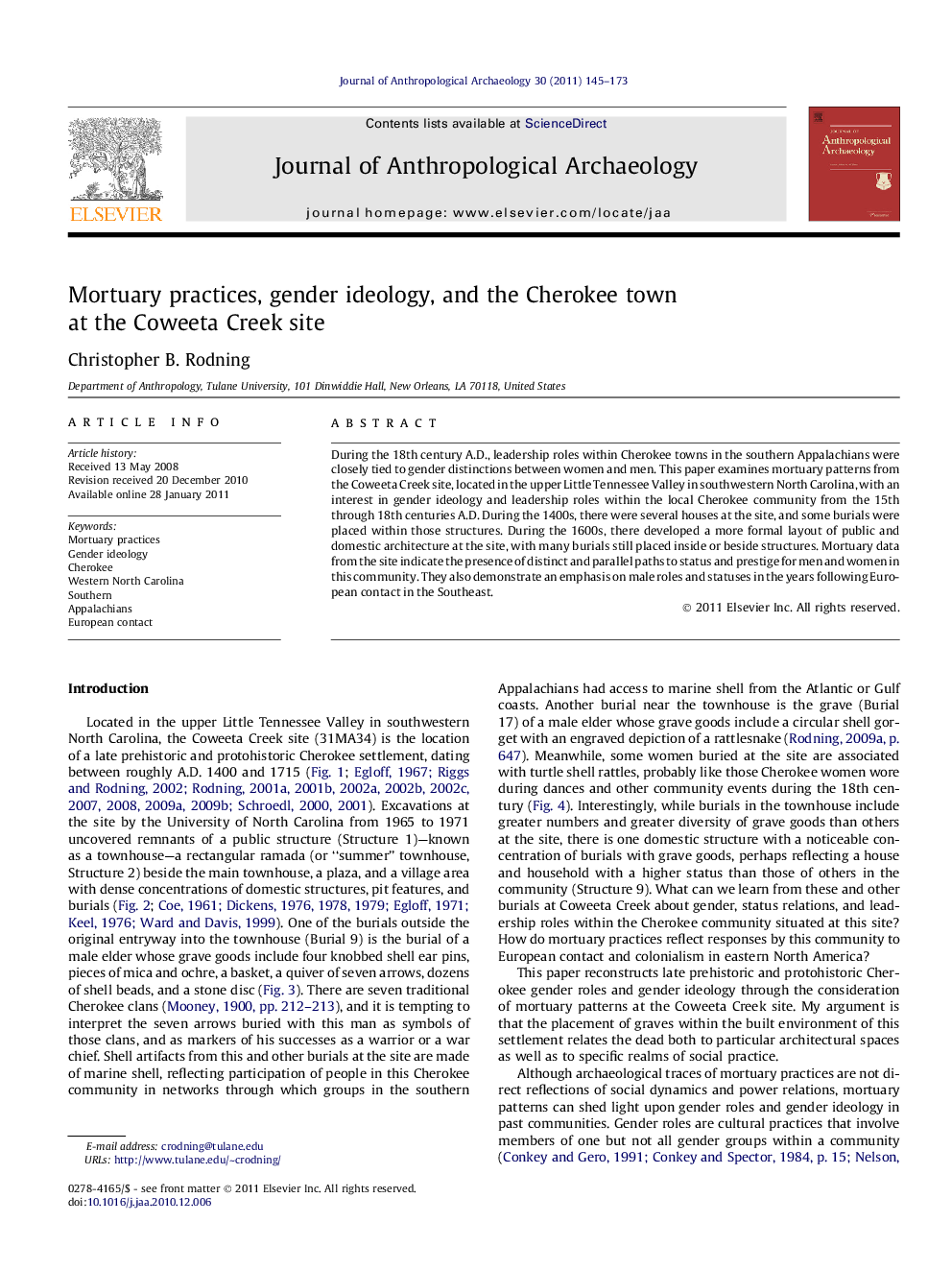| Article ID | Journal | Published Year | Pages | File Type |
|---|---|---|---|---|
| 1035067 | Journal of Anthropological Archaeology | 2011 | 29 Pages |
During the 18th century A.D., leadership roles within Cherokee towns in the southern Appalachians were closely tied to gender distinctions between women and men. This paper examines mortuary patterns from the Coweeta Creek site, located in the upper Little Tennessee Valley in southwestern North Carolina, with an interest in gender ideology and leadership roles within the local Cherokee community from the 15th through 18th centuries A.D. During the 1400s, there were several houses at the site, and some burials were placed within those structures. During the 1600s, there developed a more formal layout of public and domestic architecture at the site, with many burials still placed inside or beside structures. Mortuary data from the site indicate the presence of distinct and parallel paths to status and prestige for men and women in this community. They also demonstrate an emphasis on male roles and statuses in the years following European contact in the Southeast.
Graphical abstractFigure optionsDownload full-size imageDownload high-quality image (70 K)Download as PowerPoint slideResearch highlights► Discussion of the Coweeta Creek archaeological site in southwestern North Carolina. ► Comparison of burials predating and postdating European contact in the Americas. ► Continuity and change in spatial placement of burials at this Cherokee settlement. ► Changes in gender ideology within this Cherokee community.
